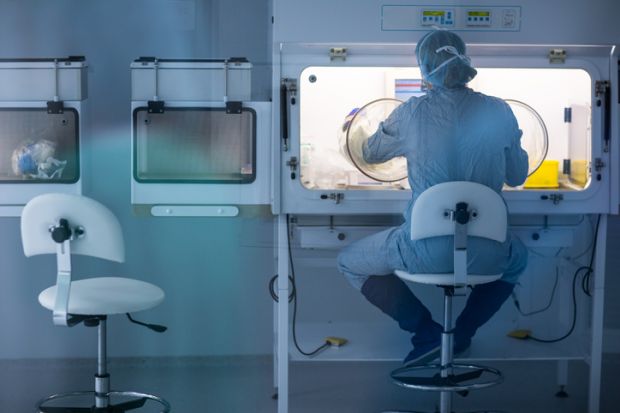US research universities are not getting anything close to the financial return they should be realising from their contributions to discovery of useful medications, an extensive multi-year analysis has found.
The calculations by a team from Bentley University document a series of ways in which university contributions are devalued, including the tendency of companies to pay lower royalty rates to their academic partners, academia’s mission to share, and the broad failure of the landmark Bayh-Dole Act of 1980 to credit academic science for the bulk of its inputs.
The big-picture conclusion is not surprising, but the details showing the scale of the mismatch may prod and guide universities toward figuring out ways of getting a fairer return, said a lead author of the work, Fred Ledley, professor of natural and applied science, and management, at Bentley.
Congress passed the Bayh-Dole Act to smooth the process of getting discoveries made in university labs into public use, by making clear that universities own the inventions they derive from federal grant support, and are expected to patent and profit from them.
But one of the new studies by Professor Ledley and his team showed that in the case of the National Institutes of Health – the US government’s leading supplier of basic-research funding – less than 1 per cent of NIH-funded science leads to products covered by the Bayh-Dole protections.
And even then, according to the series of analyses published in the journals JAMA Health Forum and PLOS One, universities don’t get full value. One of the studies calculated that academic licences generate substantially lower rates on royalties, payments before product launch, and overall total payments for scientific discoveries.
In the case of royalties, the team found, academic licences earn an average rate of 3 per cent, compared with an 8 per cent average for discoveries created in the corporate world. Professor Ledley said his team could account for some of that difference – universities, for instance, don’t generally get involved in co-developing products, as companies do – but not most of it.
“The point is that the universities are somehow being short-changed, and we’re not sure why,” he said.
Some universities do fare spectacularly well. Northwestern University, with Lyrica, which helps with a variety of conditions including nerve pain and epileptic seizures; and the University of California at Los Angeles, with the prostate cancer drug Xtandi, have both reaped transformative billion-dollar revenue streams.
More broadly, however, the lack of full financial credit could be a result of companies not fully trusting the quality of work from academic labs, Professor Ledley said. To some degree, he said, that may be warranted, and point to the need for better reliability from academic science.
But, Professor Ledley said: “There’s no evidence universities are not doing their best to do a good job at this – I think it’s systematic, I think it’s something around the culture, the expectations, that’s making that the negotiated value.”
One likely cause of the difference in income, said Stephen Susalka, executive director of the chief association of university technology managers, is the US Supreme Court’s unanimous 2006 ruling that injunctions should not be automatically issued in cases of alleged patent infringement. That created a situation, Dr Susalka said, where companies realised that they could infringe on patents while forcing the inventors to spend years in court trying to fight them.
In general, Dr Susalka agreed that universities should look for opportunities to improve their patent-related income where possible. But given that universities are primarily interested in sharing knowledge, the situation overall does not seem unreasonable, he said. “I believe they’re getting good value” for their research discoveries, he said.
Register to continue
Why register?
- Registration is free and only takes a moment
- Once registered, you can read 3 articles a month
- Sign up for our newsletter
Subscribe
Or subscribe for unlimited access to:
- Unlimited access to news, views, insights & reviews
- Digital editions
- Digital access to THE’s university and college rankings analysis
Already registered or a current subscriber?








